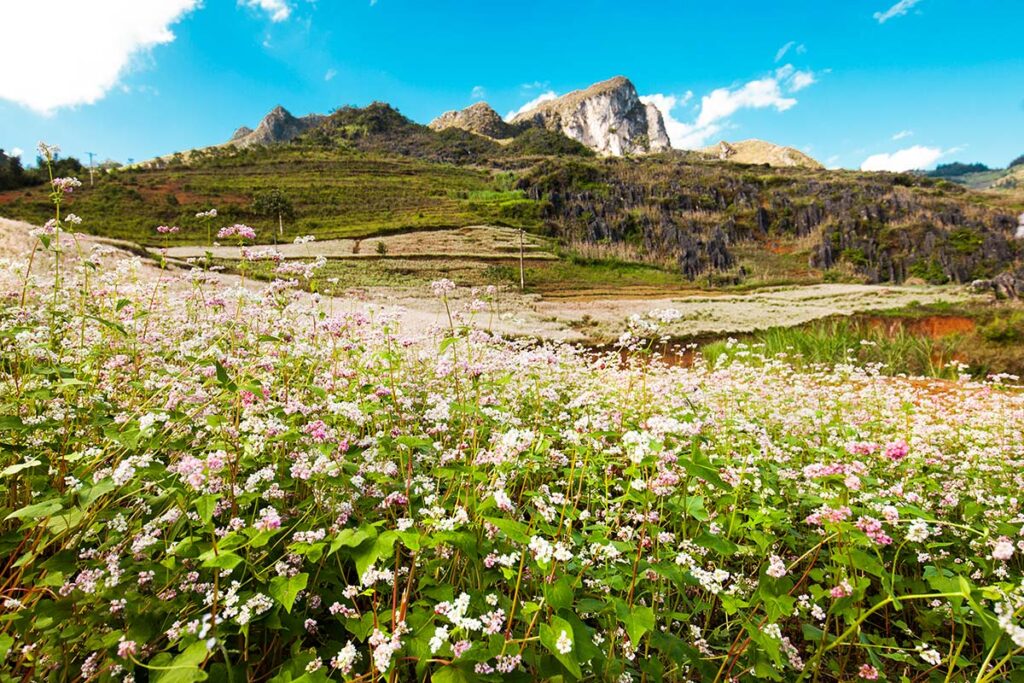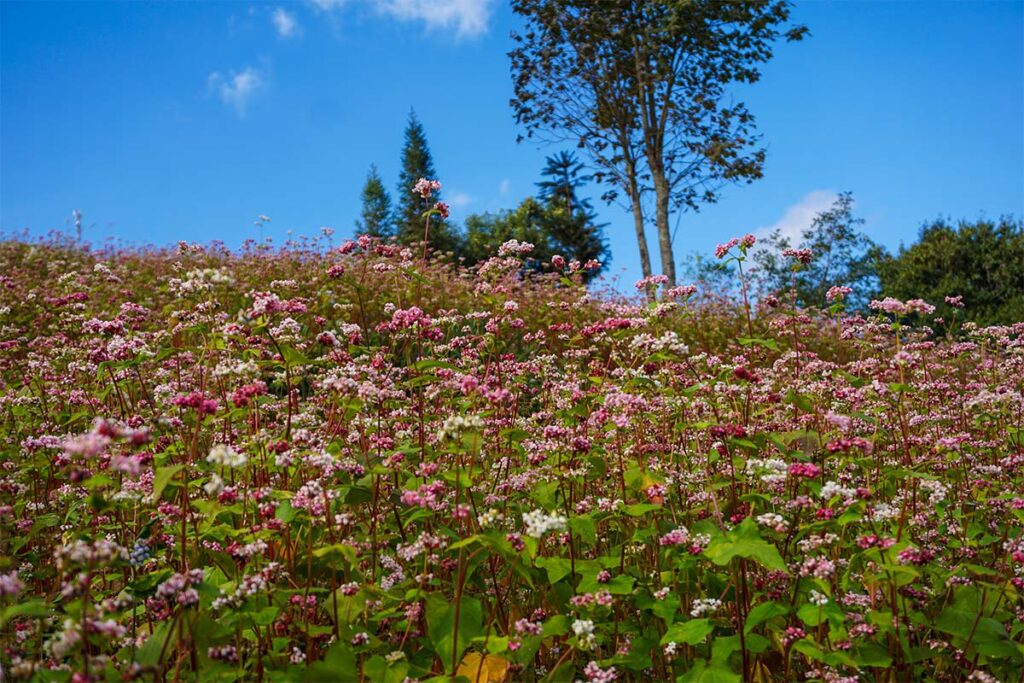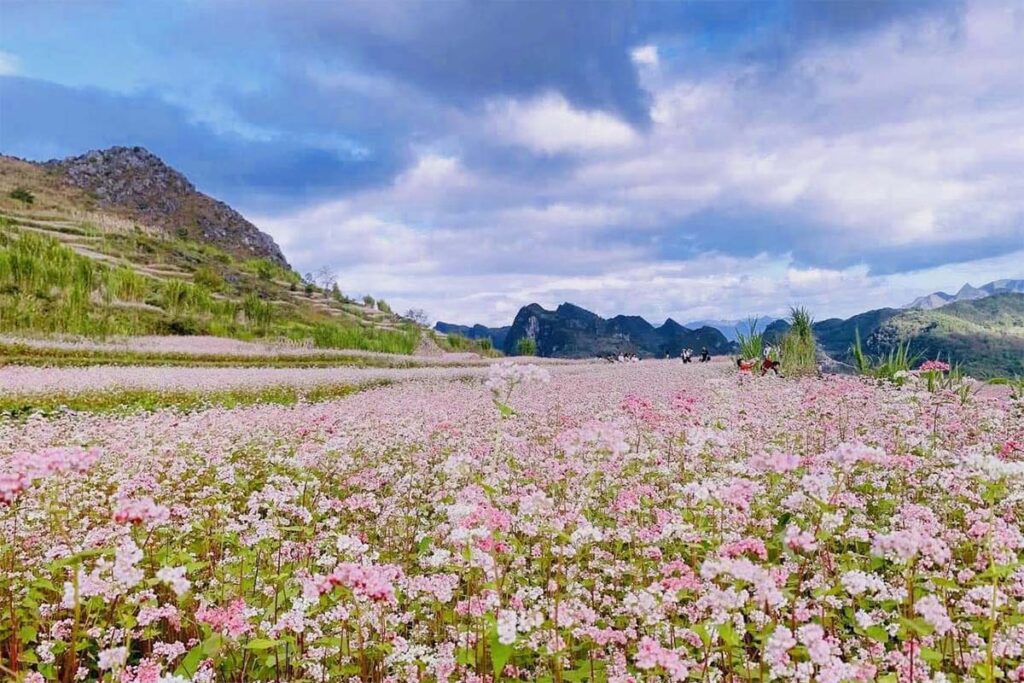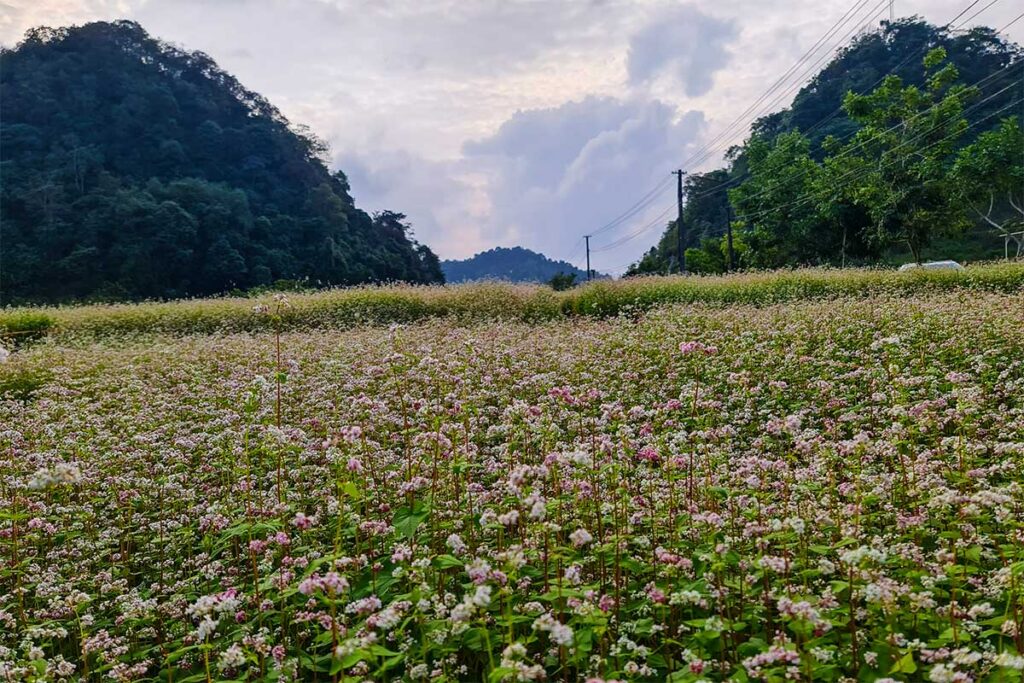What is Buckwheat?

Buckwheat is a grain-like plant that has been part of Southeast Asia’s agriculture for over 5,000 years. While the plant can reach a height of 2 to 4 feet, its three-sided grain seeds are the true star. The buckwheat flower blooms just three weeks after planting, luring people in for its undeniable beauty.
History of Buckwheat in Ha Giang
Buckwheat has a storied history, credited with saving populations from famine. During years when traditional staples like rice and corn were scarce, the indigenous people relied on buckwheat as a valuable food source. Buckwheat soon gained popularity in Southeast Asia and has become a staple, especially in Ha Giang.
Uses of Buckwheat Flowers and Buckwheat Flour
Both the flowers and the flour derived from buckwheat have versatile uses. The flour is an ingredient for making rice, pancakes, noodles, porridge, bread, and various types of cakes. Moreover, the flowers are used for making special wines and are sometimes even used as fodder for livestock.
What to expect during the buckwheat flower season in Ha Giang

The buckwheat flower, also known locally as “Tam Giác Mạch,” is a symbol of love and enduring spirit in Ha Giang. It has become an icon for tourists and photographers alike, offering stunning backdrops that contrast beautifully with the region’s rugged landscapes. The buckwheat flower fields also provide a source of livelihood for local communities, enhancing the cultural fabric of Ha Giang.
The buckwheat flower is both wild and wonderful, bearing bunched petals that resemble cones. As the flowers mature, they undergo a breathtaking transformation, changing colors from white to various shades of pink and eventually to dark red. This spectacle adds a unique charm to Ha Giang’s already beautiful landscape.
The sprawling buckwheat fields offer an excellent opportunity for photography. Early mornings and late afternoons provide the best light. A drone can capture the expansive landscapes, while a good DSLR will do wonders for close-ups. Remember, the color of the fields changes from white to dark red as the season progresses, offering different shades for your photos.
Best time to see buckwheat flowers in Ha Giang
The optimal time to see the buckwheat flowers in Ha Giang is from late September to early December, when the fields are at their most vibrant. During this time, the province seems to don a colorful carpet, making for some of the most photogenic scenes you’ll encounter.
Buckwheat Flower Festival in Ha Giang

Held annually in the middle of November, primarily in the Dong Van district, the Buckwheat Flower Festival is a celebration of this beautiful flower and its significance in the region. The festival includes exhibitions, singing competitions, and folk games, among other activities. Traditional dishes made from buckwheat flour are a highlight.
The Buckwheat Flower Festival also offers you the unique opportunity to dive into the local cuisine. From buckwheat cakes to wines made from the flowers, you’ll find that buckwheat serves as a vital ingredient in many traditional dishes. Don’t leave Ha Giang without trying Thang Co or buckwheat pancakes, which encapsulate the essence of the region’s food culture.
Best Places to see the buckwheat flowers

- Thach Son Than in Quan Ba: A stunning view awaits just 3 kilometers from Bac Sum hill.
- Lung Cam Cultural Village: In Dong Van valley, this village offers majestic landscapes and plentiful buckwheat flowers.
- Ma Pi Leng Pass: As you drive along, the flowers in the mountain ranges are simply stunning.
- Field under the Lung Cu Flag Tower: A perfect photo spot, and perhaps an unforgettable moment in your Ha Giang tour.
How to visit these areas
The best way to immerse yourself in the beauty of Ha Giang and its buckwheat flower fields is by taking the Ha Giang Loop, either by motorbike or car. Starting from Hanoi, you can take a bus to Ha Giang City and then opt for self-driving on a motorbike, riding on the back of one, or hiring a car to take you through the loop.
Tips for visiting
- Consider a motorbike tour for a closer connection with nature.
- Bring warm clothing, as the weather can get chilly.
- Make sure to charge your cameras and smartphones for plenty of photos.
- Hire a local guide to discover the best-kept secrets of the area.
- Raincoats might come in handy.
- Lastly, remember to sample the local dishes made from buckwheat.

